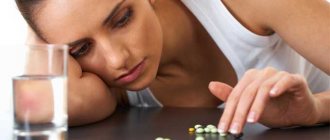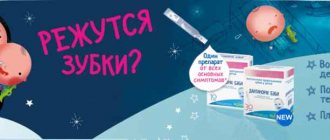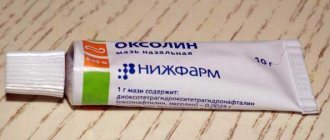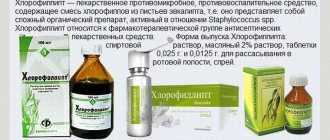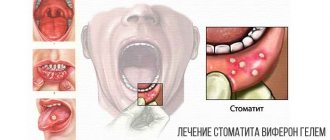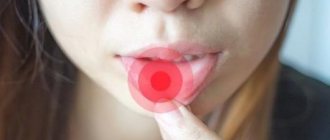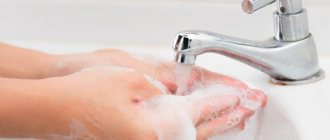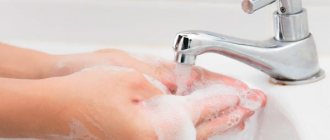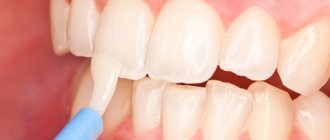Photo: spirituality.ru
Victoria Mamaeva
Chief editor of Filzor. Specialist in the field of Pharmacy
From the first days of life and throughout the years, people face oral problems. Be it the eruption of the first teeth, diseases and problems of the gums, the mucous membrane in this cavity, any illness causes discomfort, sometimes unbearable pain, and numerous undesirable consequences.
Any problem leads to the inability to eat or drink cold or slightly warm drinks. Sometimes painful wounds make it difficult to sleep peacefully. Of course, such problematic phenomena require consultation with a dentist, but in any case, you want to get rid of the pain immediately.
In such cases, the dental gel Cholisal Dental comes to the aid of both adults and children. A tube of Holisal Dental contains 15 g of medicinal mass, which miraculously relieves discomfort and, in addition, promotes the speedy recovery of damaged tissues. The product is absolutely safe and suitable for use from the first days of life. It is effective both in the case of pain during the eruption of the baby’s first teeth, and from wounds on the gums or oral mucosa in adults.
When choosing a drug, you should pay attention to the specific direction of action. In pharmacies you can find Cholisal and Cholisal Dental. Certain differences between the two drugs change the specific indications for the use of each of them.
What is the difference between Cholisal and Cholisal Dental
Many people do not pay attention to one additional word in the name of the drug. How exactly Cholisal differs from Cholisal Dental can be determined by comparing the indications for use and the composition of these two medicines. The presence of the word Dental determines the specific focus of one of the types of medications. Dental means dental, that is, for the oral cavity. However, if you compare the insert papers from the two medications, there are practically no differences from each other. It should be noted that there is also Holisal Dental for children. Although the other two types of medicine are allowed to be used by children over one year old, during the eruption of the first teeth at the age of six to eight months, it is advisable to use the children's version.
Compound
To fully understand the effect of a medicine, you need to familiarize yourself with its constituent components. Thus, Holisal Dental includes:
- Chlorine salicylate;
- Cetalkonium chloride;
- Anise oil.
These are the main components, of course, other ingredients are also present in small quantities. The composition of Holisal Dental gel is slightly different from the previous one. It consists of:
- Propylene glycol;
- Propyl parahydroxybenzoate;
- Sodium hydroxide.
- And some other components.
Both options, also for children, are indicated for use in similar situations - in the presence of ulcers, inflammation and damaged areas on the surface of the oral mucosa.
Recommendations
Reviews and instructions for the Cholisal gel are only general in nature - for various diseases there are certain features of using the product. That is why it is best to consult a dentist before use.
For example, if periodontitis or gingivitis is detected, the product is used exclusively as part of a comprehensive treatment. If you neglect this rule and use the medication without removing plaque and tartar, the inflammation will decrease, but then become chronic, which can lead to the destruction of bone tissue. The standard therapeutic course lasts approximately 10 days.
In the case of stomatitis treatment, it is advisable to use a gel to reduce pain in the erosion zone. The remedy will not cope with the ulcers themselves, especially the aphthous or herpetic type. In case of wisdom teeth eruption, the gel helps eliminate pain, but before using it you need to make sure that there is no pus in the hood and that the cheek is not swollen. If such symptoms occur, you should go to a surgeon rather than try to correct the situation with medications.
How to treat stomatitis
To successfully treat the disease in an adult, it is not enough to simply deal with unpleasant symptoms with the help of local remedies for stomatitis in the mouth, for example, anesthetic gels and ointments. It is necessary to eliminate the underlying cause of inflammation. It is often difficult for a non-specialist to determine what exactly contributed to the appearance of stomatitis, which means that independent treatment may not only fail to produce results, but also aggravate the condition. A doctor must identify the cause and prescribe complex therapy. Treatment of stomatitis in adults may include various drugs and local remedies, depending on the factors that caused the disease. The general treatment regimen is as follows:
- eliminating the causes of the disease with the help of antiviral, antibacterial, antifungal, antihistamine and other drugs. If stomatitis is caused by mechanical injuries from wearing braces or implants, you must visit a dentist to correct the defects;
- symptomatic treatment: the use of local drugs for stomatitis (ointments, gels, compresses), which have analgesic, anti-inflammatory and antimicrobial effects, as well as antipyretics in the presence of fever, etc.;
- strengthening the immune system: immunomodulating drugs and vitamin complexes, physiotherapeutic procedures can be used.
Only such comprehensive treatment of stomatitis can get rid of unpleasant symptoms and reduce the risk of relapses.
Peculiarities
Often the medicine is used as a preventive measure to prevent various injuries. It is advisable to use the product, for example, when wearing dental onlays, braces, or dentures. After all, because of them, the oral cavity is regularly damaged, in particular, the inner side of the cheeks and gums. Although numerous ulcers, wounds and cracks may appear due to exposure to other conditions:
- overly susceptible mucous membrane;
- improper brushing of teeth;
- eating food that injures the surface, for example, crackers, nuts, chips, seeds;
- smoking, which worsens the general condition of the mouth;
- metabolic pathologies.
Systematic use of Cholisal gel improves blood flow in tissues. They gradually begin to receive biologically active substances and nutritional products. Injured cells are regenerated quite quickly, and tissue healing is significantly accelerated.
Causes of stomatitis
Many factors can contribute to the appearance of stomatitis in an adult:
- pathogenic bacteria, viruses, fungi that have developed against the background of reduced immunity;
- mechanical damage to the oral cavity;
- stress, hypothermia, lack of sleep are factors affecting the body’s defenses;
- poor quality nutrition, lack of vitamins or dehydration;
- insufficient oral hygiene;
- smoking;
- side effects from chemotherapy or medications that reduce salivation;
- hormonal disorders;
- incorrect bite, poorly made dentures or braces, etc.
Indications for use of the drug Cholisal
- stomatitis of various etiologies (including recurrent aphthous (ulcerative) stomatitis);
- gingivitis of various etiologies (including acute ulcerative-necrotic Vincent gingivitis, chronic edematous gingivitis, hyperplastic and atrophic (desquamatous) gingivitis);
- acute and chronic periodontitis;
- periodontal abscess;
- injuries to the oral mucosa (including due to wearing dentures);
- minor surgical interventions in the oral cavity;
- cheilitis of various etiologies;
- thrush;
- toothache due to infectious and inflammatory processes of the oral cavity;
- as part of complex therapy for diseases accompanied by a rash on the oral mucosa (chickenpox, lichen planus, exudative erythema multiforme, etc.).
Benefits of Cholisal gel
The popularity of the product is due to the fact that it has many advantages. The medication acts quickly and can eliminate pain in a matter of minutes. In addition, among its advantages are the following:
- Long lasting. If you apply the product before bed, pain will not occur until the morning.
- Thick consistency. The medicine does not spread and adheres well to the mucous membranes.
- Penetration into the deep layers of inflamed tissue.
- Pronounced anti-inflammatory effect.
In addition, Cholisal destroys many pathogenic microorganisms. Therefore, it is used for inflammatory processes of various etiologies. This is an effective medicine in the fight against thrush and herpes.
Impact
Before you start using this or that medication, you need to familiarize yourself with the full spectrum of effects on the body. Cholisal Dental gel for the care of the oral mucosa effectively fights against numerous diseases, if for each specific case you select another suitable medicine. If you use only it, you may not completely get rid of the disease. After all, the remedy only speeds up the recovery of the affected areas several times and helps to more easily endure all the painful and unpleasant symptoms of the disease. In general, it’s worth buying Holisal Dental because it:
- It is a strong antimicrobial and anti-inflammatory agent;
- Effectively eliminates pain in a short time;
- Can be easily applied to affected areas without fear of swallowing;
- Quickly penetrates deep into tissues and kills viruses, eliminates inflammatory processes.
Cholisal or analogue: what to choose?
The Polish drug Cholisal has established itself as an effective pain reliever. The gel has a complex effect and eliminates many problems. The medication not only relieves pain, but also eliminates the inflammatory process and destroys pathogenic microorganisms.
This medicine can be used for teething in children. He is able to quickly cope with the task and eliminate pain. Other medications also have a similar effect.
The choice of one medication or another is a purely personal matter. Cholisal is considered one of the best dental medicines. Therefore, it is often used. If the child has not yet reached six months of age and has increased sensitivity to the components of the gel, it is better to choose another medication.
Also, preference should be given to analogues if side effects occur after using Cholisal. For example, vomiting or dizziness. This is an extremely rare phenomenon, but it cannot be completely excluded.
Interesting facts about teeth
- The first teeth were called “milk” by Hippocrates. The name is directly related to breastfeeding. The great philosopher believed that they are formed only through breastfeeding. He was right! Without the huge proportion of calcium contained in mother's milk, the formation of not only milk teeth, but also molars is impossible.
- Teeth remain healthy only thanks to saliva. It normalizes the acid-base balance and kills germs.
- Prosthetics for damaged teeth began in ancient times in Egypt and Rome. They used both animal teeth as crowns and structures made of expensive metals in the form of bridge prostheses.
Possible unwanted effects
The instructions prescribe using the drug with caution during pregnancy and breastfeeding, that is, the product must be recommended by a specialist, which involves monitoring its use and abandoning the gel, if necessary.
Thus, domestic medicine does not prescribe treatment with Cholisal gel during the first trimester of pregnancy.
Complications and negative consequences when using Cholisal gel were observed by practicing doctors extremely rarely. However, increased individual sensitivity to the ingredients of the drug can manifest itself as:
- not a strong burning sensation in the areas where the product was applied;
- redness;
- itching
These side effects most often disappear within a few minutes.
However, when the first unwanted symptoms appear, experts recommend stopping using the gel, since the cause of an allergic reaction may be:
- salicylates;
- anise oil,
as well as other ingredients included in the product.
In addition, dentists advise using the optimal amount of the drug during procedures, avoiding overdose.
In addition, it should be taken into account that the use of cholisal with other analgesics, anti-inflammatory drugs, antipyretic syrups can increase the concentration of active substances in the body, and an excess of antibiotics and antiseptics can also cause an allergic reaction.
Considering the free sale of Cholisal gel in pharmacies, before purchasing and using the drug, you should consult with a specialist, which will allow you to use the modern combined action product most effectively.
Cholisal gel for teething
Using the drug when the first baby teeth appear in babies is quite dangerous, since the active work of the salivary glands will cause saliva flowing from the child’s mouth to irritate the delicate skin. In addition, excess saliva can lead to more tragic consequences, as the baby may choke.
However, at an older age, the use of a gel to anesthetize the process and relieve inflammation is quite justified.
Before applying the drug, it is recommended to dry the gum area with a swab and lightly apply the product. Usually, the procedure is repeated 3-4 times a day, but for children of the younger age group, experts advise using special products that are produced in the form of:
- candles;
- syrups;
- tablets.
The appearance of wisdom teeth is also a rather painful process, however, the use of Cholisal gel in these cases is recommended if the following is not observed:
- discharge of purulent masses;
- swelling of the cheeks or gums;
- pain when swallowing;
- difficulty opening and closing the mouth;
- temperature rise;
- unpleasant smell
since, if such symptoms appear, you should immediately contact your dentist.
pharmachologic effect
Manufacturer: PHARMACEUTICAL WORKS JELFA, Poland
Release form: gel
Active ingredient: choline salicylate, cetalkonium chloride
Synonyms: Metrodent, Dentamet, Rotokan
Cholisal is used to treat diseases of the oral cavity. When applied, the gel is quickly absorbed and spreads inside the affected tissues. Cholisal eliminates bleeding gums and bad breath, relieves pain and relieves inflammation, reduces the number of pathogenic bacteria, and acts against fungal infections.
The adhesive base increases the effectiveness of the drug and retains the active ingredients on the surface for up to 6 hours. The gel relieves pain in 2 minutes.
Cholisal application and principle of action
The gel form used in the treatment of dental diseases allows for complex treatment of the oral cavity, since the active substances of the drug are capable of:
block inflammatory mediators in soft tissues;
- effectively suppress the activity of pathogenic microflora;
- anesthetize affected tissue areas.
Therefore, experts recommend Cholisal as one of the most effective means to eliminate several consequences of diseases.
In addition, the effectiveness of the composition can be enhanced by prescribing the use of the drug in conjunction with prescribed rinsing procedures with active antiseptics, for example, chlorhexidine.
In addition to its excellent healing properties, the use of the gel helps to provide:
- prolonged effect of the drug on the mucous membranes;
- high efficiency in eliminating inflammatory phenomena;
- relief of painful sensations, which is facilitated by the rather viscous consistency of the composition, which helps the active substances to be quickly absorbed into the affected tissues, fighting foci of inflammation.
However, Cholisal, the price of which is quite high, cannot be used without appropriate doctor’s recommendations.
Cholisal gel, the instructions for use of which include purchasing the medicine without a prescription, can be successfully used to treat diseases in people of any age, but the smell and taste of anise oil can cause excessive salivation, therefore Cholisal is not recommended for use in infants.
Cholisal gel: instructions for use and indications for use
The antimicrobial, anti-inflammatory and analgesic effectiveness of the drug allows specialists to successfully use the drug in the treatment of such oral diseases as:
- gingivitis;
- periodontitis;
- inflammation during the eruption of wisdom teeth;
- inflammation of the mucous membranes as a result of wearing dentures;
- traumatic injuries to the oral mucosa;
- stomatitis,
It also helps reduce pain when molars appear in children.
For gingivitis and periodontitis
Based on the instructions for use of the drug, experts recommend using the gel in combination with other medicinal formulations and therapeutic measures.
So, when gingivitis or periodontitis is detected, in addition to cholisal, the following is usually prescribed:
- removal of deposits;
- antiseptic rinsing procedures;
- using special cleaning pastes to reduce inflammation;
and in severe cases of the disease - antibacterial therapy.
Self-medication, which involves using only a gel composition, will not help complete recovery from the disease, but the disease can take a chronic form, which can cause tooth loss.
The course of treatment with Cholisal gel prescribed by the dentist is carried out for ten days. Applications are carried out twice a day, usually in the morning and evening hours, after eating, since the procedure requires:
- thorough brushing of teeth;
- mouth rinses with antiseptic agents;
- drying the mucous surfaces of the gums
and only after this, apply the gel to the areas of inflammation.
The composition is applied both to the front and back walls of the gums, located on the side of the tongue, and such treatment requires avoiding the use of liquid for half an hour after the end of the procedure.
Some ingredients of the gel help increase salivation, so saliva should be swallowed without much fear, since the drug causes virtually no side effects.
Disadvantages of the medication
No matter how effective this drug is, it has certain disadvantages. For example, for a tube of small volume you will have to pay a relatively large amount. In addition, among its disadvantages:
- Pronounced aroma and taste of anise. Due to this, salivation often becomes abundant, and the mucous membranes of the oral cavity become irritated.
- Presence of contraindications.
- Possible side effects.
No other shortcomings have been identified in Kholisal. It has proven itself to be an effective and efficient drug. Most often it is well tolerated.
Cholisal instructions for use
The gel is easy to use. According to the original instructions, Cholisal should be used as follows:
Adults apply a strip of the product up to 1 cm (children up to 0.5 cm) onto their finger, then distribute the gel over the surface of the affected area of the oral mucosa, rub the product in with light and massaging movements. The procedure must be carried out 2-3 times a day, but only after meals and before bed.
As you can see, the instructions tell you only the most important things about the application, but the method of using the gel in different clinical situations is completely different. Let's take a closer look.
1. Use of Cholisal for gum inflammation.
Gingivitis and periodontitis
– serious dental diseases that require complex therapy. Treatment should begin with removing deposits on the teeth, then you need to take courses of rinsing with antiseptics, include Cholisal in therapy and replace regular toothpastes with anti-inflammatory ones.
If you start using dental gel immediately, without affecting the cause of inflammation, then the effect of such therapy will be unjustified. Moreover, starting treatment with the gel can only worsen the situation, turning the disease into a chronic form.
Typically, gel therapy for gum inflammation lasts no more than 10 days. The product is applied twice a day - in the morning and evening, always after meals, rinsing with antiseptics and drying the gums with a gauze swab. After the procedure, you are not allowed to eat for the next 2 hours or drink for 30 minutes.
Cholisal, use for stomatitis
For herpetic stomatitis, Cholisal is used exclusively for pain relief from erosions. In case of aphthous stomatitis, there is no point in using the gel, since the disease occurs due to allergies.
3. Application of gel during teething
Adults, children and teenagers can relieve teething discomfort with Cholisal. It is not recommended to use the gel to relieve gum pain in infants, since anise oil stimulates excessive salivation, which can lead to irritation and choking.
The affected area must be treated with the product, after drying the mucous membrane with a gauze swab. The procedure can be repeated about 3-4 times a day. This medicine is used only in the absence of swelling of the cheeks, suppuration and other serious complications.
Reviews
Regarding the use of the gel during teething, you can find mostly positive reviews. The drug quickly and effectively copes with inflammatory processes, relieves pain and cools the affected area. If you use the product the night before going to bed, its effect will last almost until the morning. It also has an antipyretic effect. For many, it is a plus that the composition does not contain lidocaine, since it can provoke various and severe allergies.
There are also many positive reviews when using ointment for stomatitis. Within 3-5 minutes you can notice a significant improvement in your condition, pain and discomfort disappear. Inflammation disappears 15-20 minutes after application. If you apply compresses before going to bed, you can quickly get rid of the problem and its symptoms.
Pharmacological properties of the drug Cholisal
The drug uses the synergistic effect of components: anti-inflammatory, analgesic and antiseptic. The main active ingredient of the drug, choline salicylate, has a local anti-inflammatory and mild analgesic effect. The mechanism of the analgesic, antipyretic and anti-inflammatory action of salicylates is associated with inhibition of COX activity, as well as thromboxane synthetase activity. As a result, the synthesis of prostaglandins is inhibited, primarily prostaglandins E and F in tissues altered by inflammation, in the wall of the gastrointestinal tract and kidneys. Applied topically, in normal doses it does not have a systemic effect. Cetalkonium chloride enhances the analgesic and anti-inflammatory effects. The antiseptics included in the gel base, methyl parahydroxybenzoate and propyl parahydroxybenzoate (in concentrations of 0.15 and 0.08%, respectively), have an antibacterial effect. Choline salicylate quickly penetrates the mucous membranes (approximately 2 times faster than acetylsalicylic acid). Salicylates easily penetrate most tissues and body fluids. They have a high affinity for blood proteins and tissues, binding (50–80%) to blood plasma albumins. The half-life of salicylates is 2–4 hours. The biotransformation of salicylates occurs in tissues, mainly in the liver to salicylic acid, from which salicylamic acid, glucuronides, acetal, and gentisic acid are formed. Biotransformation products are excreted in the urine (75% is salicylic uric acid). Approximately 10% of salicylates are excreted unchanged in the urine. Excretion occurs slowly, approximately 50% of the dose is eliminated within 24 hours.
Characteristics of the drug
The drug is available in gel form. It is a homogeneous colorless mass with the smell of anise oil. There are packages of 10 and 15 g. Manufacturer: Polish pharmaceutical plant Elfa. The product contains the following active ingredients:
- choline salicylate;
- cetalkonium chloride.
One of the active ingredients of the drug is choline salicylate. This substance has a local analgesic, antipyretic and anti-inflammatory effect. The component also destroys fungi, including the genus Candida.
Due to the presence of cetalkonium chloride in the composition, the medicine has an antiseptic effect. The analgesic effect is observed 2-3 minutes after application of the product and lasts up to 8 hours. In addition to the main active ingredients, the product contains auxiliary components:
- glycerol;
- anise oil;
- purified water;
- ethanol;
- glycerol;
- methyloxyenzoate;
- Hydroxyethylcellulose.
The medication does not contain sugar and is well tolerated. Its active substances are quickly absorbed into the mucous membranes. Due to this, the fastest possible effect is achieved. If it is not observed, the inflammatory process has spread as deeply as possible and cannot be eliminated by local means.
Salicylic ointment quickly and efficiently copes with corns both on the heels and on the entire foot. It quickly exfoliates dead skin cells, removing dry callus layer by layer and restoring the skin. Read more in the article: “using salicylic ointment for heels.”
Cholisal composition, release form
Cholisal is a modern dental drug with a pronounced analgesic, anti-inflammatory and antibacterial effect. The gel acquires its unique healing properties thanks to a combination of the following active ingredients:
- Anise oil (1.6 mg per 1 g of gel) is a natural oil that has a calming effect on inflammation and kills pathogenic microorganisms;
- cetalkonium chloride (87.1 mg per 1 g of gel) – a broad-spectrum antiseptic;
- Choline salicylate (100 mcg per 1 g of gel) is an analgesic that also relieves inflammation.
Auxiliary components: 50 mg of glycerin, up to 1 g of water, 390 mg of ethyl alcohol, 20 mg of hyaetellose, 1.5 mg of methyloxybenzoate, 0.8 mg of propyl parahydroxybenzoate.
Why is this composition so good?
When most dental preparations that are used topically differ only in their superficial effect, Cholisal gel penetrates into the deep layers of the oral mucosa. This property is given to the gel by the active substance choline salicylate. The component formed from salicylic acid acts on the site of inflammation, blocking inflammatory mediators in the oral mucosa. The analgesic component has a light structure, so it penetrates quite deeply into the layers of the mucous membrane.
Cholisal gel acts simultaneously on bacteria, fungi and viruses; this universal property is given to it by a broad-spectrum antiseptic - cetalkonium chloride.
The product is available in gel form, 10 g in aluminum tubes, sealed cardboard packs.
Adverse reactions and overdose
In some cases, after direct contact of the oral mucosa and the ointment, undesirable reactions may occur in the form of a burning sensation and tingling sensation. Such reactions are normal and disappear on their own after a few minutes. In rare cases, allergies may occur.
If serious side effects occur, you should stop using the gel and tell your doctor.
There are no cases of drug overdose. The ointment should not be swallowed; it is intended for external use only. If part of the medicine gets inside, then you need to rinse the stomach and, if necessary, begin symptomatic treatment.
Use of the drug Cholisal
Cholisal is used topically 2-3 times a day (for pain relief) or after meals and before bedtime
A column of gel 1 cm long for adults and 0.5 cm for children is carefully rubbed into the affected area of the mucous membrane for several minutes. When treating periodontal diseases, the gel should be placed in the gum pockets 1–2 times a day, and also applied in the form of compresses or gently rubbed into the gums 1–2 times a day. The duration of treatment is determined depending on the clinical situation
For 30 minutes after using the gel, do not rinse your mouth with water or eat food.
List of analogues and substitutes
Cholisal costs about 450 rubles in pharmacies. If you wish, you can find cheaper analogues. There are many drugs that have a similar effect. They can also be used for pain relief during teething in children.
| A drug | Active substance | Manufacturer | Price |
| Kamistad | laureth-9 and chamomile extract | STADA Arzneimittel AG, Germany | 300 rubles |
| Dentol baby | benzocaine | PHARMACEUTICALS INC., Canada | 200 rubles |
| Kalgel | cetilleridine chloride and lidocaine | Glaxosmithkline, UK | 350 rubles |
| Metrogil Denta | metronidazole benzoate | Unique Pharmaceutical, India | 230 rubles |
| Solcoseryl | solcoseryl | MEDA Pharmaceuticals, Switzerland | 640 rubles |
| Baby Doctor First teeth | herbal extracts | Hatzi Hazakot, Israel | 350 rubles |
| Dentinox | lidocaine hydrochloride and chamomile extract | Dentinox, Germany | 370 rubles |
The difference between these drugs is not only in the active ingredient and price. It is problematic to say unequivocally which one is best to use to eliminate pain. Each of them has its own advantages and disadvantages.
Indications for use
The dental product has a wide range of uses, but most often this drug is prescribed for pathologies associated with infection of the oral mucosa, as well as for severe pain syndromes and serious inflammatory processes. According to the instructions for use and reviews, Cholisal gel helps with:
- periodontitis;
- cheilitis;
- minor surgical interventions;
- gingivitis;
- stomatitis of various pathogenesis, including candidiasis;
- injuries to the oral cavity of all possible etiologies;
- deformation of the mucous membrane due to the use of prostheses;
- teething;
- Stevens-Johnson syndrome;
- Lichen ruber covering the oral cavity.
In any of the described cases, you must first consult with a specialist and go through all the relevant stages of the examination.
It should be borne in mind that when using the Cholisal gel in parallel with other medications, its antipyretic, analgesic and anti-inflammatory properties are enhanced. It is noteworthy that no cases of drug overdose have been recorded.
Actions in case of eye contact
When using the gel, unexpected situations may arise. For example, the product accidentally came into contact with the mucous membranes of the eye. In this case, you need to urgently take the following measures:
- Rinse your eyesight with plenty of water. It should be cold, but boiled.
- Rinse for at least a quarter of an hour. This will be enough to completely wash the product.
- Blot mucous eyes with a napkin.
- Place anti-inflammatory drops into both eyes. Sulfacyl sodium, Levomycytin and their analogues can be used.
After washing the eye, it is allowed to use ointments rather than drops. They are applied to the lower eyelid. Excellent results are observed when using Hydrocortisone ointment. After such procedures, it will be possible to eliminate redness, swelling and burning.
Possible problems when using the drug
Dentists say that the product does not always have a positive effect. Some people may have an allergic reaction to Cholisal gel. In this case, analogues are selected with an alternative composition, and treatment continues.
Dentists also note that the anise oil included in the drug can cause excessive salivation. If for an adult this does not present any discomfort, then with small children everything is different. So, babies in the first year of life do not yet swallow all the saliva that comes out. In this case, liquid flows out of the mouth and irritates the skin. Dentists also say that children can choke on saliva. Most often, this problem occurs in babies in the first six months of life.
That is why the drug is prescribed for children with extreme caution and only in some cases.
If you use the drug incorrectly, complications may occur. The most common violation is neglect of sterility. So, applying medicine with dirty hands can cause an infection. In this case, dentists say that the patient not only does not experience relief, but also develops an infection. In this case, the person additionally needs antimicrobial therapy.
Instructions for use Cholisal Dental
First, you need to read the instructions for use of the Holisal Dental dental gel. Adults can rub a product about 1 cm long into the affected areas of the mouth up to three times a day. It is convenient to perform the procedure shortly before eating in order to numb the wounds and be able to easily swallow food. Also apply before bedtime. Of course, before the procedure you need to rinse your mouth thoroughly, dry the wounds slightly, then rub in the product with just one or two fingers, massaging the areas. Children are allowed to perform the procedure once or twice per day. The gel must be half a centimeter long.
To avoid undesirable consequences, each time before use you must read the instructions for the Holisal Dental dental gel and pay special attention to the shelf life
General information
Gel "Cholisal" is often recommended for children during teething. In addition, the drug is often used to treat inflammatory pathologies of the oral cavity in adult patients. The product is absolutely safe, free of toxins, well tolerated by the body and does not cause side effects.
However, immediately before using it, you should still consult with your dentist in order to avoid unpleasant consequences and to improve the effectiveness of therapy in general.
The generally accepted drug classification classifies this drug as an anti-inflammatory, analgesic, antimicrobial drug for topical use. Thanks to its combined effect, the product is widely used for various damage to the oral mucosa, relieving inflammation, swelling and pain.
special instructions
The drug is intended exclusively for topical use. It cannot be taken orally. The medicine does not affect the ability to operate machinery or drive vehicles. There is also no limitation of physical activity.
For long-term and short-term treatment, it is not recommended to use Cholisal simultaneously with other antibacterial agents. The medication combines well with other drugs. No obvious incompatibility was identified.
If the permissible dosage is increased excessively, Cholisal can enhance the effect of other painkillers, antipyretic and anti-inflammatory drugs.
If the recommended dose is observed, such an effect is not observed.
The gel cannot be frozen or stored in the refrigerator.
The optimal storage temperature is 25 °C. The medicine should be kept out of the reach of children. The shelf life of the medicine is 3 years. After opening the tube, the gel is stored for no more than 2 weeks. The duration of continuous therapy should not exceed 10 days.
Comparison with other drugs
As we can see, the choice of drugs for the treatment of the oral mucosa is considerable, but all these drugs have mainly a superficial and narrow therapeutic effect. For example, today there is a large selection of dental drugs that have only an antibacterial effect. Such products most often include antibiotics and antiseptic components (chlorhexidine, metronidazole). Such drugs include Asepta-balsam, Metrogyl Denta, Faringosept and others.
There are also dental products on the market that have only an anti-inflammatory effect (for example, “Parodontocide”) or an analgesic effect (for example, “Kamistad”, “Dentol”).
Cholisal's analogs
Many buyers are looking for something to replace Cholisal with. This is not surprising, because the average cost is 400 rubles.
List of cheap analogues of Cholisal with prices.
| Analogue | Price in rubles | Manufacturer country |
| Holisal | 350-400 | Austria |
| Candide | 300-500 | India |
| Dentamet | 110-180 | Russia |
| Anti-Angin Formula | 350-400 | Netherlands |
| Dantinorm | 1000 | France |
| Metrogil Denta | 250-300 | India |
| Kamistad | 250-350 | Germany |
| Stomatophyte | 220-280 | Poland |
| Solcoseryl | 380-450 | Switzerland |
| Faringosept | 180-230 | Romania |
| Asepta | 160-300 | Russia |
| Dentinox | 380-420 | Germany |
| Dantinorm Baby | 1000 | France |
| Leader Baby | 230-280 | Russia |
| Kalgel | 450-500 | Poland |
The most popular children's dental analogs of Cholisal gel include such products as Kamistad, Metrogyl Denta, Kalgel, Solcoseryl, Asepta. Let's take a closer look at the listed medications.
